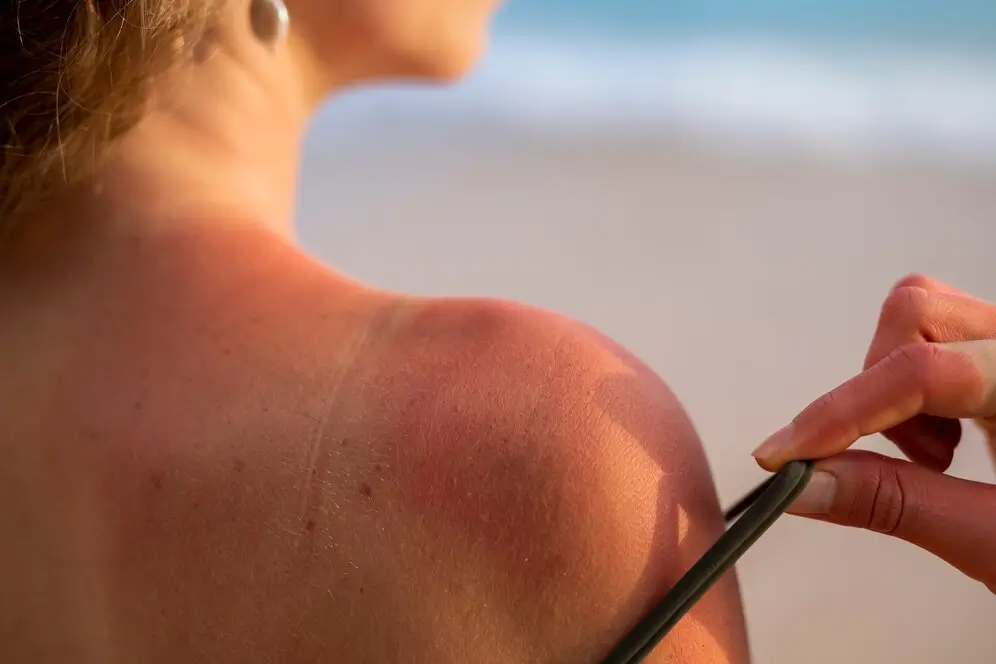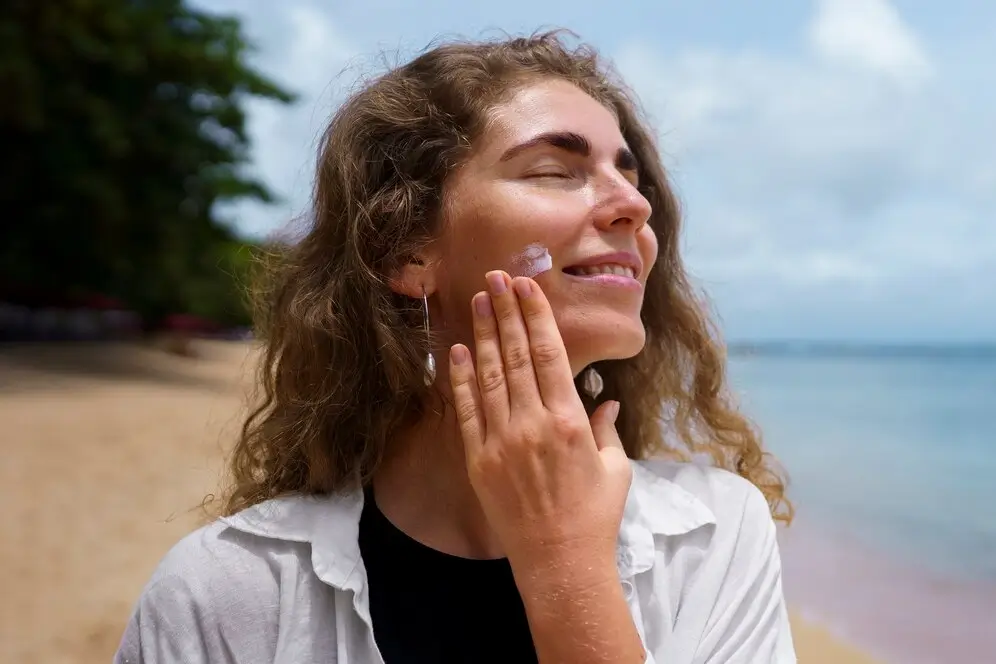
Table of Contents
Exploring The Ways Of Treating Hell’s Itch
Sunburn is a prevalent issue, particularly during the longer summer days when more individuals choose to expose their skin to direct sunlight. According to previous studies, almost one-third of adult Americans get sunburned at least once a year. But what if the results leave you in tremendous pain and unexplainable irritation? Hell’s itch, a severe and dreadful condition, is a consequence of extreme sunburn. In this blog, we will discuss more about this condition and the ways to get relief from it.
What is Hell’s itch?
Hell’s itch is an uncommon but harrowing side effect of excessive sun exposure. Its name comes from the fact that it can itch and hurt so much that you feel as though you’re in, well, you know. Although the name successfully explains its severity, what precisely is a hell’s itch?
Hell’s itch is an excruciatingly painful sensation that can develop following sunburn. It’s nearly complicated to describe how horrible and itchy Hell’s itch is, coming from those who have had the displeasure of feeling it.
After being exposed to UV light from the sun, the syndrome often manifests itself between 24 to 72 hours and lasts for approximately 48 hours. Perhaps as a result of their frequent sun exposure, the shoulders and backs of most people suffer from it.
Fortunately, the consequences don’t go any worse than a few highly unpleasant days. Hell’s itch is unbearable, yet it doesn’t really harm you and can be eased with over-the-counter medications.
What are the symptoms of Hell’s itch?
The term “hell’s itch” describes an excruciating red itching that typically appears a few days or hours following a sunburn. According to many, this condition’s symptoms go beyond a simple sunburn. The first signs of sunburn usually occur 24 to 72 hours after exposure to the sun. Sunburn is frequent on places like the shoulders and back that receive a lot of sun exposure.
Compared to a regular sunburn, a hell’s itch is more painful, results in extreme scratching and skin peeling, and is typically difficult to treat.
The itch penetrates deeply into the skin, and it is usual for the affected area of the skin to begin to peel. In the short run, it is really uncomfortable. The majority of people impacted report that it might be challenging to relieve the itchy feeling.
When the sunburn goes away, so does the itching. If afflicted, it is possible to acquire the symptom every time one gets sunburned. Many ask how to stop sunburn itching which we will discuss later.

Causes of this itch
Although frequent sunburns are commonly reported, the prevalence of Hell’s itch is difficult to determine. Five to ten percent of people, according to some estimates, have gone through it.
In general, skin damage occurs when you receive a sunburn. This damage prompts your body to release histamines along with additional chemicals to attempt to heal the damage, leading to pain and itching. This process is unpleasant for the majority of people, but it’s not quite intolerable.
Hell’s itch is believed to be brought on by injury to nerve endings, which can become irritated and inflamed. In specific individuals, the degree of injury to the nerve endings is so great that it results in an awful itch. However, the specific cause of the condition is still undetermined.
How to Prevent Hell’s Itch?
It’s impossible to know if a sunburn will become an unbearable itch, but you can take the proper measures. Recall that sunburns cause Hell’s itch, so avoiding sunburns is the best defense against it. Here’s how to go about it.
- Put sunscreen on the skin that is exposed
Under the sun for the entire day? Applying sunscreen with an SPF of at least 30 is essential for efficiently blocking UVA and UVB rays. Make careful to apply sunscreen to any areas of your body that are exposed. Apply roughly one ounce of sunscreen all over your body as a general guideline.
- Reapplying Sunscreens
People frequently overlook the fact that sweat and swimming remove sunscreen. It’s crucial to reapply it every two hours because of this. Additionally, try to find a sunscreen that is water-resistant rather than waterproof. It should be possible for the former to adhere to your body even after it has been drenched in water.
- Cover Yourself
We understand that it can be alluring to go around in your swimsuit, but if you want to avoid becoming sunburned, you must develop the habit of covering up. For example, you can cover up with a long-sleeved cover-up after swimming and wear a hat with a wide brim to shield your face on hot summer days.
Risk Factors to Consider
There have only been three case reports of Hell’s Itch published in the scientific literature so far; hence, it is not thoroughly defined. Some surveys used subjective, self-reported data as a foundation to determine the distinctive symptoms because there were no objective diagnostic guidelines available for making the diagnosis of Hell’s Itch.
The symptoms of Hell’s Itch usually appear after sun exposure and are frequently brought on by water exposure—swimming, showering, bathing, sweating, humidity, or topical cream application, for example.

How to Treat Hell’s Itch?
Hell’s itch has no known remedy or cure because it is not widely recognized. The important thing is to go through the few days of potentially excruciating discomfort because the ailment is self-limited but does disappear on its own. However, there are several home remedies to ease the discomfort as you wait for it to disappear completely.
Also, stay away from hot showers and lotions that include unidentified herbal ingredients. This applies to all sunburns, but Hell’s Itch is the worst. Make an appointment with your doctor to see if they can help ease your pain and suffering if the pain is very severe and not improving with any of these methods. In addition to making sure nothing else is wrong, they can prescribe harsher drugs, such as a steroid cream or painkillers.
Home remedies to help soothe Hell’s itch
There are several at-home solutions you can try to alleviate the irritation caused by Hell’s itch. However, for severe conditions, consult an expert.
- Aloe Vera: The gel-like substance from the aloe plant hydrates and calms skin.
- Rich Moisturizing cream: Moisturizers work similarly to aloe vera in hydrating the skin and creating a barrier against the outermost layer of skin.
- Hydrocortisone Cream: This is all about reducing skin inflammation. It relieves the burning sensation right away.
- NSAIDs, or Non-steroidal Anti-inflammatory Drugs: NSAIDs, such as aspirin and ibuprofen, help decrease pain and inflammation.
- Oral Antihistamines: They actually function by having a soothing effect and reducing any skin allergic reaction.
- Cool Compress: Applying a cool, damp washcloth to your skin will help narrow blood vessels and lessen inflammation. This is known as a cool compress.
- Stay Hydrated: Getting plenty of water in your diet is essential since sunburns impair the skin’s ability to protect itself from infection.
- Using Colloidal Oatmeal in a Bath: Colloidal oatmeal protects skin, eases burns, and lowers inflammation.
- Cover Your Skin: You should make every effort to shield the burned area from outside elements like wind and sun that could cause more damage.
- Frequently moisturize: To aid in the regeneration of the skin barrier, reapply cream to the burn several times during the day.

FAQ’s
- What does Hell’s itch feel like?
Hell’s itch gives an excruciating itching sensation. Many with past experiences describe the feeling as a burning sensation inside their skin. An unbearable pain is commonly associated with this skin condition.
- What are the symptoms of sun poisoning?
The symptoms of sun poisoning, which include severe skin irritation, blisters, headache, nausea, dehydration, and fever, might manifest many hours after exposure. If you spend a lot of time in the sun without wearing sunscreen, you risk getting severe sun poisoning.
- How do you stop sunburn from itching after a shower?
Sometimes, when you spend a long time bathing, your skin gets dehydrated, and causes itchy sunburn. To avoid this, you are supposed to apply a gentle moisturizer as soon as you are out of the bath. Keep from using heavy moisturizers, as they might clog the pores and make the situation even worse.
- How many hours do hells itch last?
Hell’s itch is a painful sunburn itch that causes redness, flaky skin, and a burning sensation. It takes a while to appear after long hours spent in the harsh sun. The symptoms of Hell’s itch usually go away within 48 hours and appear to arrive in waves.

Takeaway
Hell’s itch afterburn is described in several personal narratives as an excruciating, uncontrolled itch, notwithstanding the lack of study on the subject. An oatmeal bath, mild moisturizers, antihistamine medicine, and topical steroid cream are some possible treatments for Hell’s itch. To avoid Hell’s itch or severely itchy sunburn, the NIH suggests the following:
- Don’t be in the sun from 11 a.m. to 3 p.m., and choose a place where you are not directly exposed to the sun.
- Take care not to burn.
- Wear appropriate clothing and sunglasses to protect yourself.
- Use additional caution with kids
- Wear sunscreen with a minimum SPF 30.
- Make sure to consult a board-certified dermatologist to determine the most appropriate course of treatment.